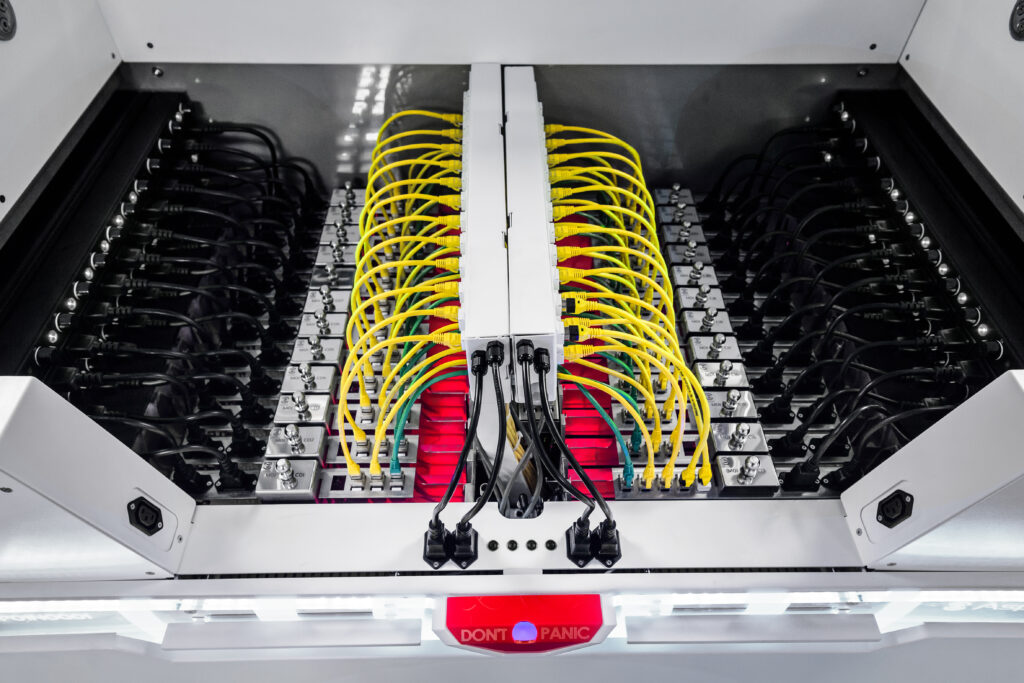In today’s high-performance computing era, cooling solutions have become a pivotal factor in ensuring efficient and smooth operation. One such revolutionary cooling solution is immersion cooling. The global Immersion Cooling Market, which reached a value of more than USD 196.5 million in 2021, is witnessing tremendous growth. With an estimated Compound Annual Growth Rate (CAGR) of 22.61% from 2023 to 2028, the market is projected to cross the USD 667.40 million threshold by 2027, heralding a new era in the cooling solutions market.
What’s the Overview of the Immersion Cooling Market?
Immersion cooling is a cooling practice used for high-performance computing where IT components and other electronics are submerged in a thermally conductive dielectric liquid. The heat generated by the devices is directly absorbed by the liquid, making it a highly effective cooling mechanism. It is primarily used in data centers, edge computing, artificial intelligence, and high-performance computing.
The rising demand for energy-efficient, high-performance cooling solutions is driving the global immersion cooling market growth, particularly in high-performance computing environments like data centers, where effective heat management is crucial.
What are the Components of the Immersion Cooling Market?
The immersion cooling market includes several components:
- Coolants: These are dielectric fluids or liquids used to absorb the heat produced by electronics. They can be single-phase (where the fluid remains in a liquid state) or two-phase (where the fluid boils to capture the heat and then condenses back to a liquid).
- Cooling Tanks: The electronic devices are submerged in these tanks filled with coolant.
- Heat Exchangers: They are used to transfer the absorbed heat from the coolant to a secondary medium (usually air or water), which then disperses the heat outside the system.
- Pumps and Circulating Equipment: These are used to circulate the coolant and ensure that the temperature is evenly distributed within the system.
Market Segmentation
The immersion cooling market is segmented based on product type, application, and geography. Product types are primarily divided into single-phase and two-phase immersion cooling systems. In terms of application, the market caters to industries like data centers, edge computing, high-performance computing, and artificial intelligence.
Geographically, the market is divided into North America, Europe, Asia-Pacific, and the rest of the world, with North America currently leading due to the high concentration of data centers and advanced IT infrastructure.
Benefits and Applications of Immersion Cooling
Immersion cooling offers several benefits over traditional air and water cooling methods. Firstly, it provides superior cooling performance due to the higher heat absorption capacity of the dielectric fluids. It also reduces energy consumption, as no fans or other active cooling mechanisms are required. Furthermore, it reduces noise pollution, allows for higher-density server arrangements, and offers better protection for electronics from dust and oxidation.
In terms of applications, immersion cooling is predominantly used in data centers due to its energy efficiency and space-saving benefits. It’s also used in high-performance computing and edge computing where high power density and heat removal are needed. The artificial intelligence industry, with its demanding computational requirements, also uses immersion cooling to maintain peak performance.
What Factors Driven the Immersion Cooling Market?
The immersion cooling market is experiencing rapid growth due to several driving factors. The increasing demand for energy-efficient and eco-friendly cooling solutions in data centers is a significant driver. Also, the rise in power density in various industries, such as artificial intelligence and high-performance computing, necessitates advanced cooling solutions like immersion cooling.
Furthermore, increasing environmental concerns and stringent regulations related to greenhouse gas emissions are pushing companies to adopt greener alternatives like immersion cooling.
Challenges and Barriers in the Immersion Cooling Market
Despite its potential, the immersion cooling market faces several challenges. The high initial setup and maintenance cost of immersion cooling systems could be a barrier for some companies. Additionally, concerns about coolant leaks leading to equipment damage might deter potential users.
A lack of awareness and technical understanding of immersion cooling technology, particularly in emerging markets, may also limit market growth.
Market Opportunities and Future Outlook
The future of the immersion cooling market is promising, with plenty of opportunities for growth. As the demand for data centers, edge computing, and high-performance computing continues to rise, so too will the need for efficient, compact, and green cooling solutions.
Emerging markets, with their fast-growing IT infrastructure, provide ample opportunities for the expansion of the immersion cooling market. Additionally, ongoing research and advancements in coolant materials and system designs are expected to further drive market growth.
In conclusion, the immersion cooling market is poised for significant expansion in the coming years, driven by the increasing need for energy-efficient, space-saving, and eco-friendly cooling solutions. Despite the challenges, continuous innovation, coupled with growing awareness and adoption of green technologies, is set to propel the immersion cooling market to new heights.
You may also like
-
How Does Plywood HSN Code Decide the GST Rate for Traders and Manufacturers?
-
POS Terminal Type: Which Is Best for Your Business?
-
How to Choose Fixed and Portable Gas Monitors for Industrial Gas Detection?
-
Simplifying Trademark Registration in Hong Kong: What Businesses Need to Know
-
EPR Registration and Annual Returns Explained: Compliance Made Simple for Businesses

